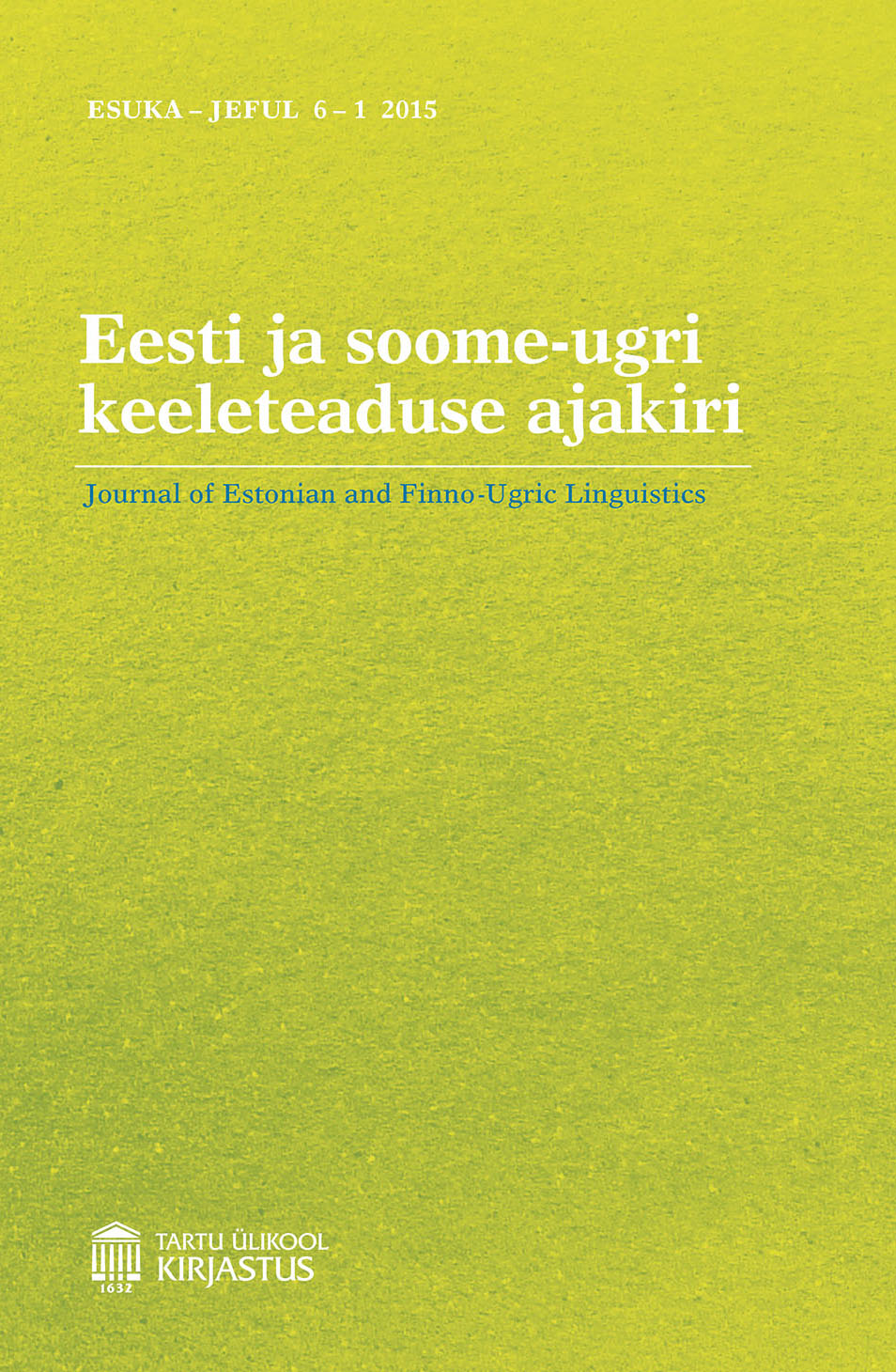Dialectal variation in Votic: Jõgõperä vs. Luuditsa
DOI:
https://doi.org/10.12697/jeful.2015.6.1.02Keywords:
Votic, dialectal variation, language contacts, phonetics, morphologyAbstract
This paper provides a comparison of two varieties of the Votic language. Based on field materials collected between 2001 and 2012 from the last speakers of Votic, we compiled a list of the most important phonetic and grammatical features that distinguish between Jõgõperä and Luuditsa varieties. The ten features are: the degree of apocope, the initial h, merging of allative and adessive cases, secondary geminates, illative singular forms, genitive and partitive plural markers, imperfect forms, the active participle marker, conditional markers, and negative pronominal forms. The analysis has shown that many differences can be explained by the influence of the neighbouring Ingrian language. There are more contact induced changes in the Luuditsa variety, which is probably the result of more intensive contacts with the Ingrian population in this village. The contemporary Luuditsa variety is a vivid example demonstrating that language change in the Lower Luga area was driven by convergent developments in no lesser degree than by divergent processes.Downloads
Download data is not yet available.
Downloads
Published
2015-06-09
How to Cite
Rozhanskiy, F., & Markus, E. (2015). Dialectal variation in Votic: Jõgõperä vs. Luuditsa. Eesti Ja Soome-Ugri Keeleteaduse Ajakiri. Journal of Estonian and Finno-Ugric Linguistics, 6(1), 23–39. https://doi.org/10.12697/jeful.2015.6.1.02


